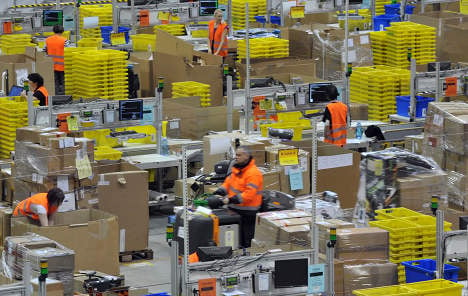However, for the year so far exports – the driver of Europe’s biggest economy – fell 1.1 percent in the January-August period in nominal terms compared to the figure for the same period last year.
Christian Schulz of Berenberg Bank, pointing at the sluggish export figures so far this year, said that “mainly as a lagging consequence of the eurozone crisis, Germany looks set to miss last year’s record trade figures.”
Destasis said that in adjusted terms, which factor in a summer lull in trade, Germany’s August trade surplus widened to €15.6 billion, from an adjusted €15 billion in July.
Exports rose 1.0 percent on-month while imports were up 0.4 percent.
In nominal or unadjusted terms, exports were down 8.7 percent on-month and imports fell 6.4 percent, bringing the August trade surplus to €13.1 billion.
The January to August export drop reaches 3.1 percent for sales to countries in the eurozone, which represent a third of Germany’s exports.
But Schulz saw the August figures as part of recent data that signal a pick-up in underlying growth in the third quarter.
“After stronger German retail sales data, August German trade data looked livelier too,” he said in a note. “For the rest of the year, the outlook for German trade looks mildly positive.
“Imports should be boosted by robust domestic demand, while exports should benefit from the eurozone’s return to growth, growth stabilisation in China and strong growth in the UK.”
Pointing to the US government shutdown, he said, “the US fiscal shenanigans should not have a lasting negative impact, although they may weigh on the October data.”
READ MORE: EU-US deal would create ‘160,000 German jobs’
AFP/jcw
Follow us on Twitter @thelocalgermany
Like The Local Germany on Facebook



 Please whitelist us to continue reading.
Please whitelist us to continue reading.
Member comments